 Since 2008, 318 offshore wind turbines have been installed in the Belgian part of the North Sea. Both the construction technology and the environmental impact monitoring have changed a lot during the past decade. In a new report, the scientific partners in the monitoring programme summarise what we have learned so far about the longer-term effects onto a variety of ecosystem components, from benthic invertebrates to birds and marine mammals. As time series grow longer, our ability to detect impacts increases. Some striking results include that artificial hard substrata such as wind turbine foundations cannot be considered to be equivalent alternatives for species-rich natural hard substrata, that wind farms deter some bird species but attract others, that the number of stranded harbour porpoises correlates with periods of high intensity underwater sound and that offshore wind farms only subtly changed fishing activity without creating lower catch rates of the main target species.
Since 2008, 318 offshore wind turbines have been installed in the Belgian part of the North Sea. Both the construction technology and the environmental impact monitoring have changed a lot during the past decade. In a new report, the scientific partners in the monitoring programme summarise what we have learned so far about the longer-term effects onto a variety of ecosystem components, from benthic invertebrates to birds and marine mammals. As time series grow longer, our ability to detect impacts increases. Some striking results include that artificial hard substrata such as wind turbine foundations cannot be considered to be equivalent alternatives for species-rich natural hard substrata, that wind farms deter some bird species but attract others, that the number of stranded harbour porpoises correlates with periods of high intensity underwater sound and that offshore wind farms only subtly changed fishing activity without creating lower catch rates of the main target species.
Evolving construction practices and monitoring programme
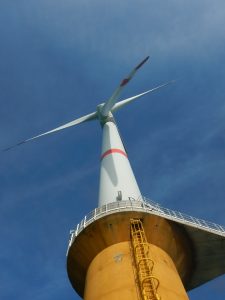 From 2008 to 2018, 318 offshore wind turbines with a total installed capacity of 1556 MW have been constructed in the Belgian part of the North Sea. The technology and construction practices have drastically changed during this decade. These changes include an evolution in foundation types (from gravity-based foundations and jacket-foundations to XL monopile wind turbines), an expansion of the geographical area for wind farm construction (towards more offshore waters) and an increase in the size and capacity of the wind turbines (from 3 MW turbines with a 72 m rotor diameter to 8.4 MW turbines with a 164 m rotor diameter).
From 2008 to 2018, 318 offshore wind turbines with a total installed capacity of 1556 MW have been constructed in the Belgian part of the North Sea. The technology and construction practices have drastically changed during this decade. These changes include an evolution in foundation types (from gravity-based foundations and jacket-foundations to XL monopile wind turbines), an expansion of the geographical area for wind farm construction (towards more offshore waters) and an increase in the size and capacity of the wind turbines (from 3 MW turbines with a 72 m rotor diameter to 8.4 MW turbines with a 164 m rotor diameter).
The monitoring programme WinMon.BE has documented and evaluated the environmental impact of the construction and operational phases of the wind farms during this entire period. It evolved to be the basis for an in depth understanding of longer-term effects onto a variety of ecosystem components, from benthic invertebrates over fish to birds and marine mammals. The new report takes stock of what we have learned so far and zooms into a selection of innovative monitoring and impact mitigation techniques.
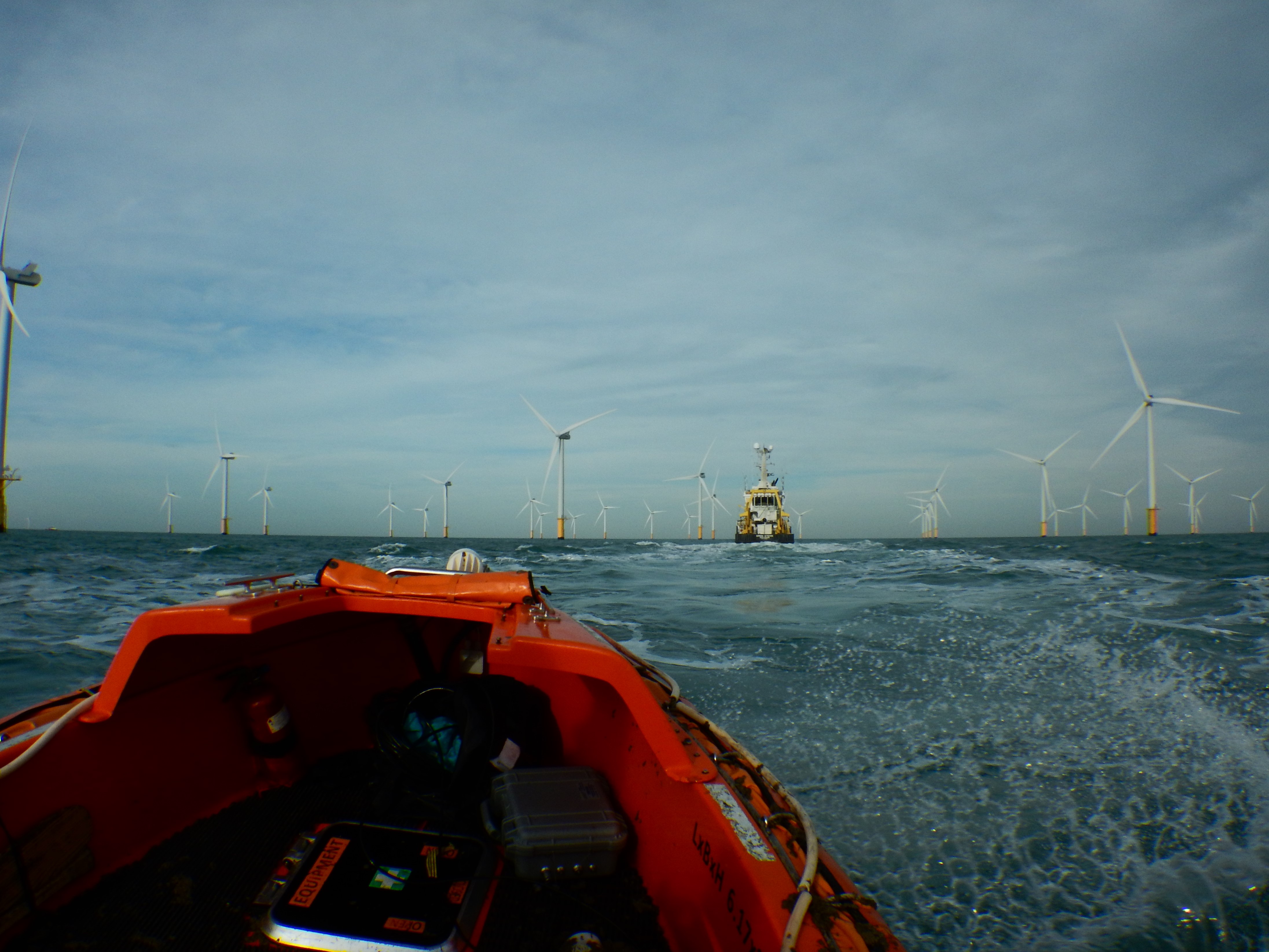
Ecosystem impacts
Sediment sampling revealed consistent impacts on the sediment composition and macrobenthic communities (invertebrates living in and on the sea floor, such as worms, shellfish, crustaceans and starfish). Sediment fining was only observed very close to the jacket foundations, while no conclusive results were found in terms of organic enrichment. Higher densities and diversity (species richness) of macrobenthic organisms were found in closer vicinity of the wind turbines. The phenomenon was most pronounced at the Thornton Bank. This confirms the hypothesis that impacts are specific to sites, foundation-types or even individual turbines, which highlights the importance of a continued monitoring of the macrobenthos at the different turbine types.
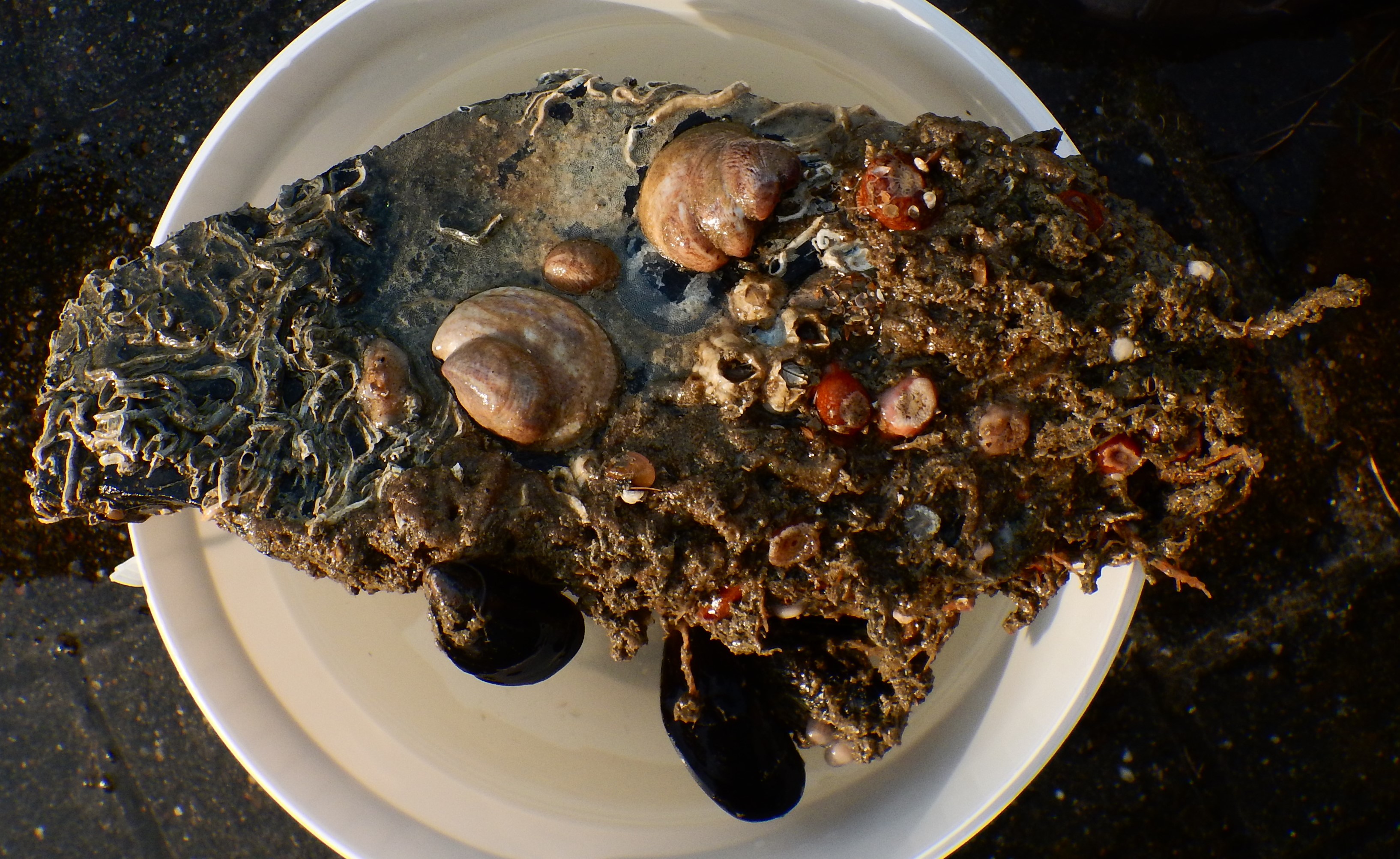
With respect to the macrofauna that is living/growing on the foundations, a decade of monitoring revealed three succession stages. In a first, relatively short, pioneer stage (~2 years), the installation of the turbine foundations was followed by rapid colonization which differed between locations and foundation types. This was followed by a more diverse intermediate stage characterized by large numbers of suspension feeders (such as Jassa herdmani, a small amphipod crustacean). A third, and possibly climax stage, with a lower species diversity and frilled anemone Metridium senile and blue mussel Mytilus edulis as the dominant species, was reached after nine to ten years. Earlier reports on offshore wind turbines as biodiversity hotspots generally refer to the species-rich second stage of succession, so these should be read with caution as the rich biodiversity now appears to be short-lived and disappears again in a later stage (after about six years in this study). This underlines that artificial hard substrata cannot be considered as an alternative for the species-rich natural hard substrata.
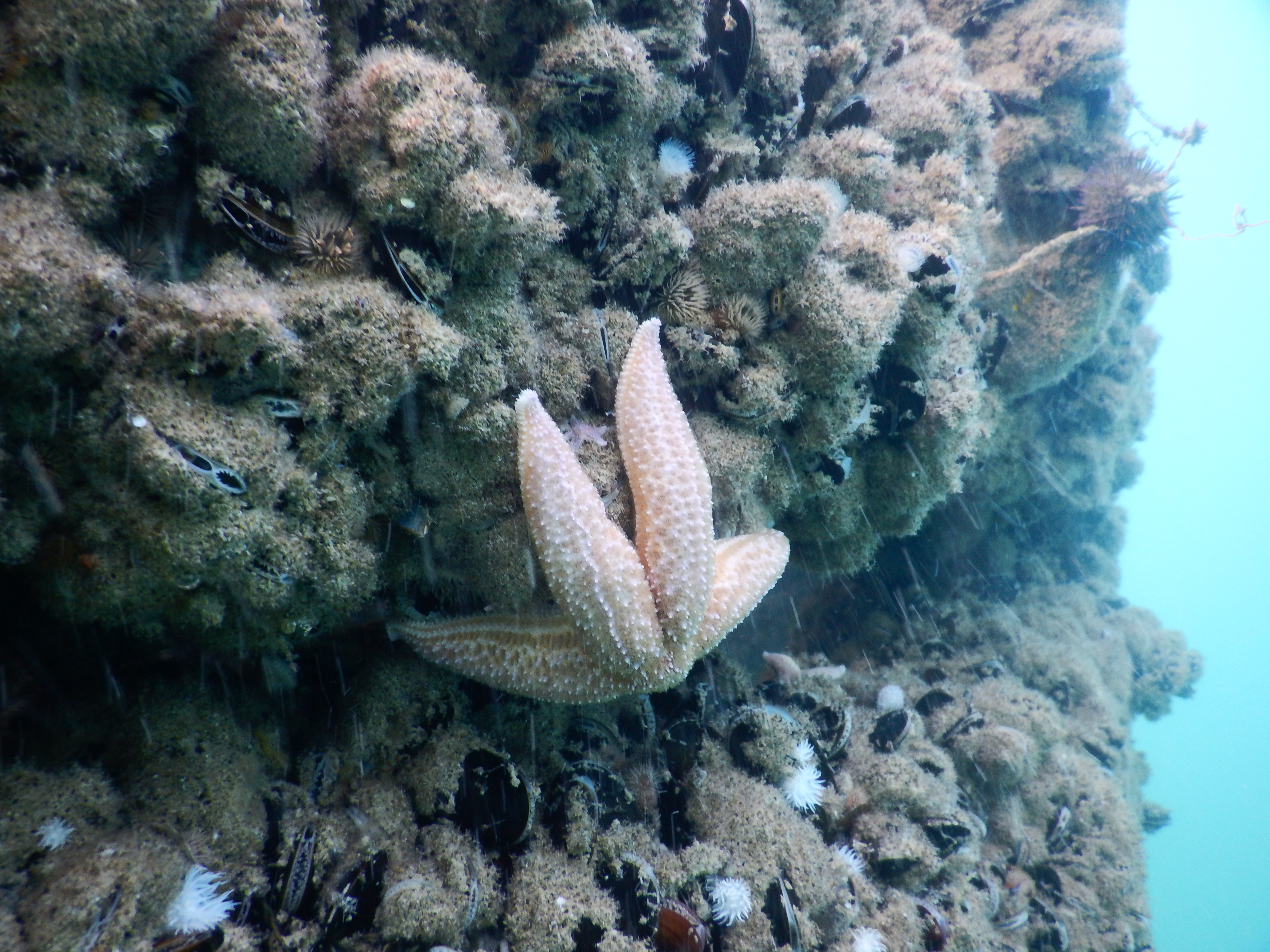
Birds and mammals
Comparing pre-construction seabird distribution data with post-construction distribution data showed a significant avoidance of the wind farm area by northern gannet Sula bassana (-98%), common guillemot Uria aalge (-60-63 %) and razorbill Alca torda (-75-80%). In contrast, attraction to the wind farm could be demonstrated for great cormorants Phalacrocorax carbo, herring gulls Larus argentatus and greater black-backed gulls Larus marinus. Importantly, most of these effects were no longer noticeable at distances over 0.5 km away from the wind farm edges. How these effects impact individual fitness, reproductive success and survival of the birds remains yet unknown.
It is demonstrated that the Belgian offshore wind farms are visited by migrating Nathusius’ pipistrelles Pipistrellus nathusii. The study sheds a preliminary light on the meteorological conditions that favour bat activity in the southern North Sea and the possible risk of colliding with offshore wind turbines. Wind speed (most detections at wind speed of maximally 5 m/s), wind direction (peak in occurrence for east- and southeasterly winds), temperature and barometric pressure seem to influence bat activity in the wind farms. Wind speed seems to have the largest influence on bat activity at sea. These insights offer the possibility to reduce the risk of collision for bats, for example by curtailing the turbines when certain weather conditions occur during the migration season.
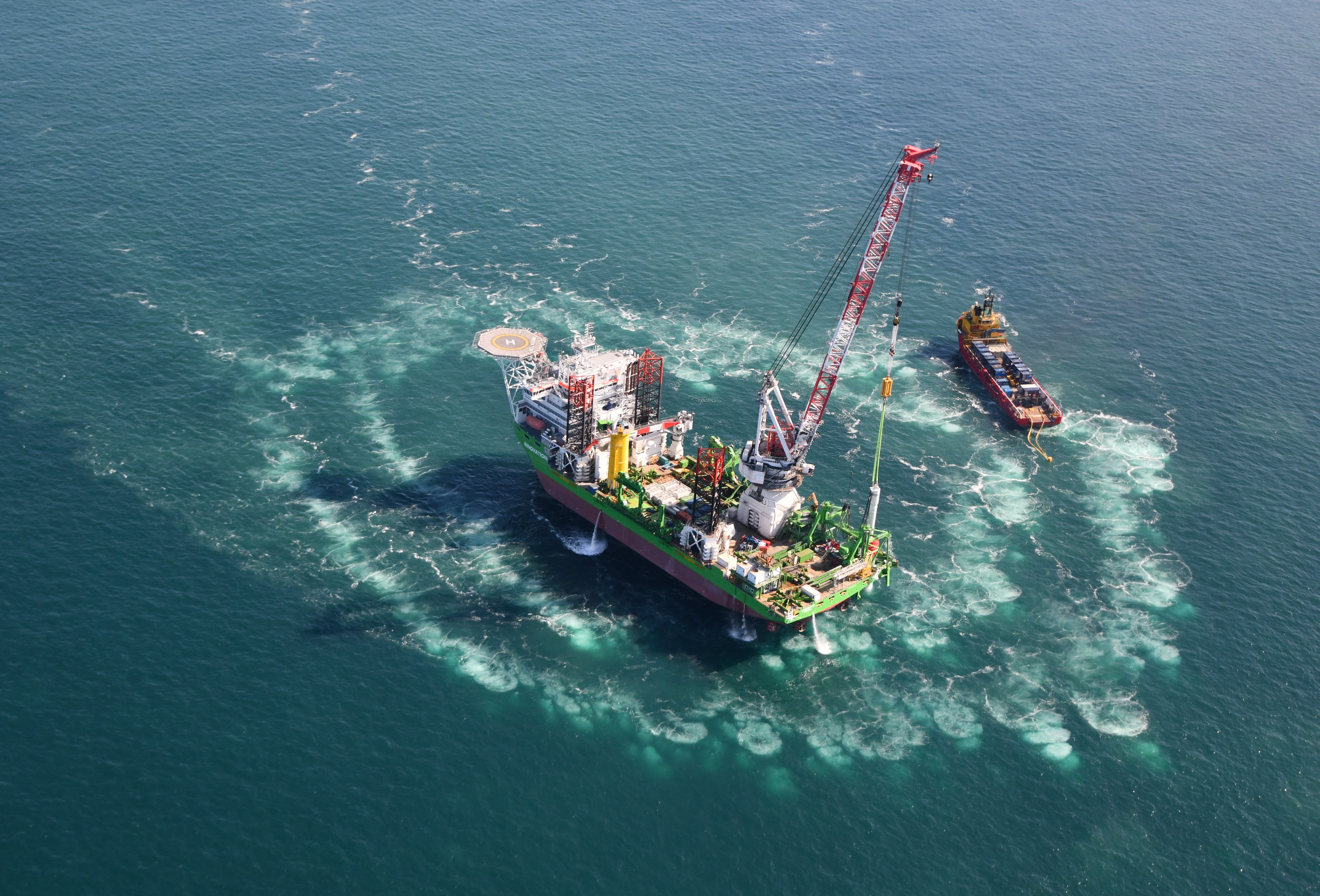
The high impulsive sound levels produced during offshore wind farm construction (pile driving) result in displacement and disturbance of harbour porpoises Phocoena phocoena, the most common cetacean in the Southern North Sea. Our analysis reveals a higher occurrence of harbour porpoises strandings on Belgian beaches during months with a high intensity of impulsive sound. This preliminary analysis suggests an increased mortality of harbour porpoise during periods of wind farm construction and will be subject to future in-depth analysis. In the past few years, sound mitigation techniques hence have received a lot of attention and various techniques are now commercially available. In this report, we quantify how Big Bubble Curtains and stationary resonator systems (AdBm Noise Mitigation System) were applied to lower the sound pressure during wind farm construction in Belgian waters.
Impact on fisheries
Because fishing is prohibited within the Belgian offshore wind farms (ca. 140 km² operational), the overall surface area available for fisheries is decreasing as offshore wind farms are proliferating. It was demonstrated that the offshore wind farms only subtly changed the fishing activity (effort, landings and catch rate of the top 10 species, including the main target species sole Solea solea and plaice Pleuronectes platessa of the Belgian and Dutch beam trawl fleet in Belgian waters over the period 2006-2017. Evidently, a remarkable decrease in fishing effort was however observed inside the offshore wind farms, suggesting that local fishermen have adopted efforts to adapt to the exclusion of the wind farm zone from their fishing grounds and have increased their fishing effort at the edges. While catch rates of sole in the vicinity of the operational offshore wind farms remained comparable to catch rates in the wider area, catch rates of plaice were higher around some operational wind farms.
The Monitoring Programme WinMon.BE is a cooperation between the Royal Belgian Institute of Natural Sciences (RBINS), the Research Institute Nature and Forest (INBO), the Research Institute for Agriculture, Fisheries and Food (ILVO) and the Marine Biology Research Group of Ghent University, and is coordinated by the Marine Ecology and Management team (MARECO) of the Royal Belgian Institute of Natural Sciences.
The complete report, as well as the older monitoring reports, can be consulted at http://odnature.naturalsciences.be/mumm/en/windfarms/.

